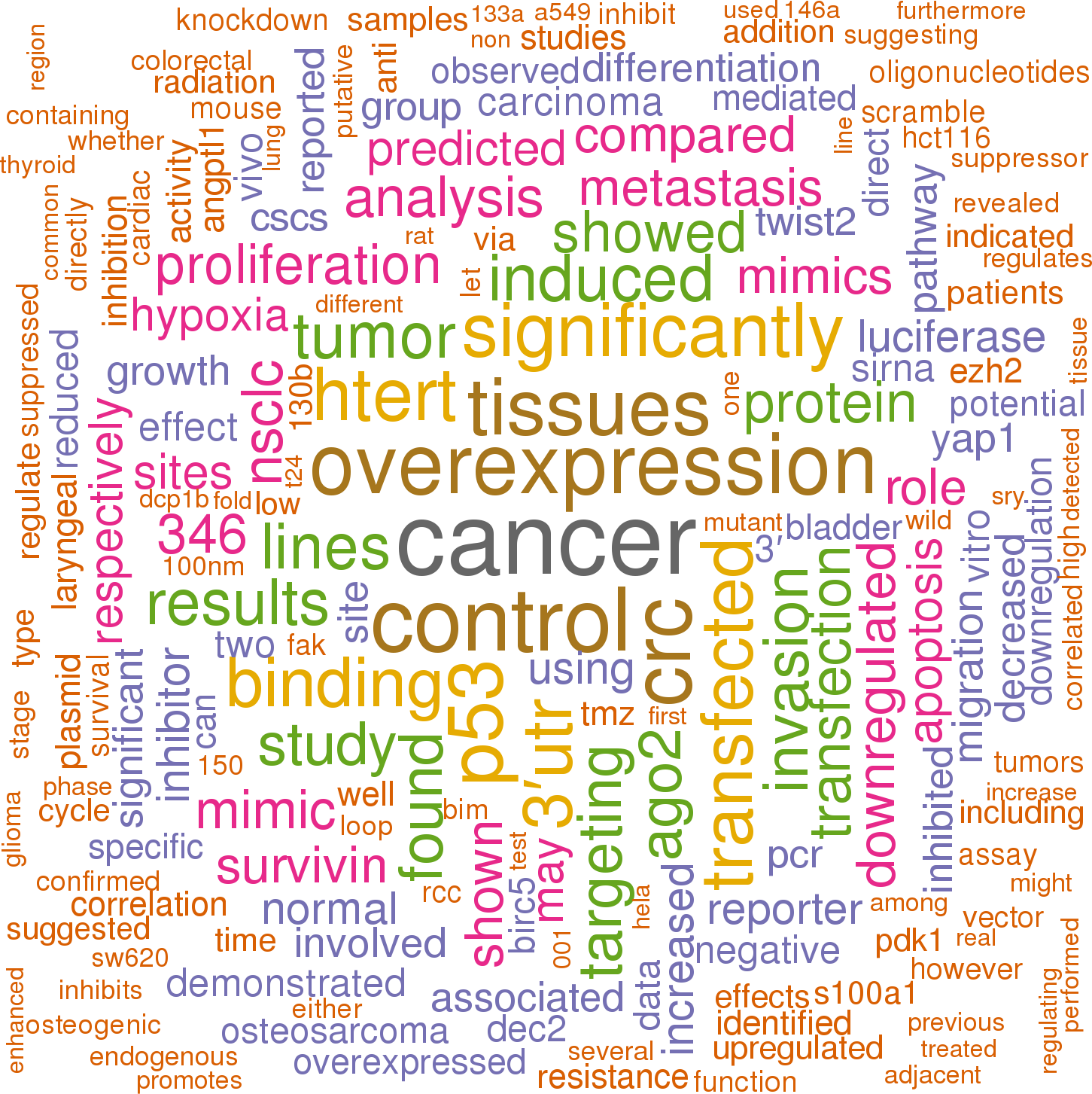Accession
MI0000455
Symbol
HGNC:
MIR138-2
Description
Homo sapiens
hsa-mir-138-2 precursor miRNA mir-138
Gene
family?
family?
RF00671;
mir-138
Summary
Caution, this is an AI generated summary based on literature. This may have errors. ?
MIR138-2 is a microRNA encoded by a specific genomic locus in mice, with its expression being post-transcriptionally regulated and detectable in tissues where a certain Dicer inhibitor is absent [PMC2647296]. Unlike other microRNAs with proximal NKX2-5 binding sites, MIR138-2 is not dysregulated, suggesting a unique regulatory mechanism [PMC6828809]. It has been identified as one of the microRNAs significantly associated with CAG length in the brain and has been implicated in various biological processes, including cancer [PMC5764268]. MIR138-2 has also been linked to tumor suppression and other cancer-related processes [PMC9763387]'>PMC9763387], as well as to type 2 diabetes through differentially methylated regions associated with the gene [PMC9763387]. This locus has undergone duplication events, indicating its potential importance in genomic variation and disease association [PMC8005705].
Literature search

226 open access papers mention hsa-mir-138-2
(1607 sentences)
(1607 sentences)
Sequence
73255
reads,
294
reads per million, 82 experiments
cguugcugcAGCUGGUGUUGUGAAUCAGGCCGacgagcagcgcauccucuuacccgGCUAUUUCACGACACCAGGGUUgcauca
.(.(((.((..(((((((((((((...(((((..(((.((......)))))...)))))..))))))))))))).)).))).).
.(.(((.((..(((((((((((((...(((((..(((.((......)))))...)))))..))))))))))))).)).))).).
Structure
c u u AG UCA -ac c cg g ugc gc CUGGUGUUGUGAA GGCCG gag ag c | ||| || ||||||||||||| ||||| ||| || c acg UG GACCACAGCACUU UCGgc uuc uc a a u U -G -UA cca - cu
Annotation confidence
Medium
Do you think this miRNA is real?
Comments
The mature sequence shown here represents the most commonly cloned form from large-scale cloning studies [2].
Genome context
chr16: 56858518-56858601 [+]
Disease association
hsa-mir-138-2 is associated with one or more human diseases in the Human microRNA Disease Database
| Disease | Description | Category | PubMed ID |
|---|
Mature hsa-miR-138-5p
| Accession | MIMAT0000430 |
| Description | Homo sapiens hsa-miR-138-5p mature miRNA |
| Sequence | 10 - AGCUGGUGUUGUGAAUCAGGCCG - 32 |
| Evidence |
experimental
cloned [2] |
| Database links |



|
| Predicted targets |



|
Mature hsa-miR-138-2-3p
| Accession | MIMAT0004596 |
| Description | Homo sapiens hsa-miR-138-2-3p mature miRNA |
| Sequence | 57 - GCUAUUUCACGACACCAGGGUU - 78 |
| Evidence |
experimental
cloned [2] |
References
|



